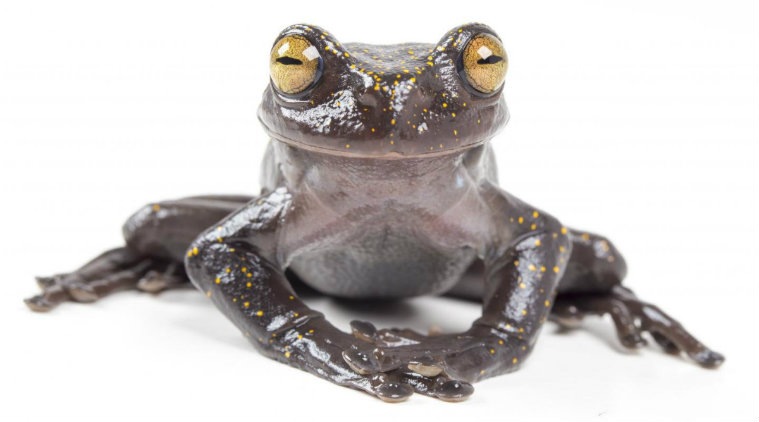New treefrog species discovered in Andes
Despite being newly described, Hyloscirtus hillisi is already at risk of extinction. It has a small distribution range near a large-scale mining operation carried out by a Chinese company.
 The frog has enlarged claw-like structure located at the base of the thumb. (Image: Gustavo Pazmiño, BIOWEB Ecuador)
The frog has enlarged claw-like structure located at the base of the thumb. (Image: Gustavo Pazmiño, BIOWEB Ecuador)
Scientists have discovered a new treefrog species, with an extraordinary, enlarged claw-like structure located at the base of the thumb, that live on a remote
“To reach the tabletop, we walked two days along a steep terrain. Then, between sweat and exhaustion, we arrived to the tabletop where we found a dwarf forest,” said Alex Achig, one of the field biologists who discovered the new species. “The rivers had blackwater and the frogs were sitting along them, on branches of brown shrubs similar in colour to the frogs’ own. The frogs were difficult to find, because they blended with their background,” Achig said.
[bc_video video_id=”5805240620001″ account_id=”5798671093001″ player_id=”default”]
The frog has enlarged claw-like structure located at the base of the thumb. The function of the feature is unknown, but it could be that it is used either as a defence against predators or as a weapon in fights between competing males.
Also Read Out of its shell: a new crab species scuttling in the forests of Arunachal Pradesh
The species name, Hyloscirtus hillisi, honors Dr. David Hillis, a member of the National Academy of Sciences of the United States of America, who discovered three closely related frog species in the same genus in the 1980s, while conducting a series of field trips to the Andes of southern Ecuador. Despite being newly described, Hyloscirtus hillisi is already at risk of extinction. It has a small distribution range near a large-scale mining operation carried out by a Chinese company, researchers said.







